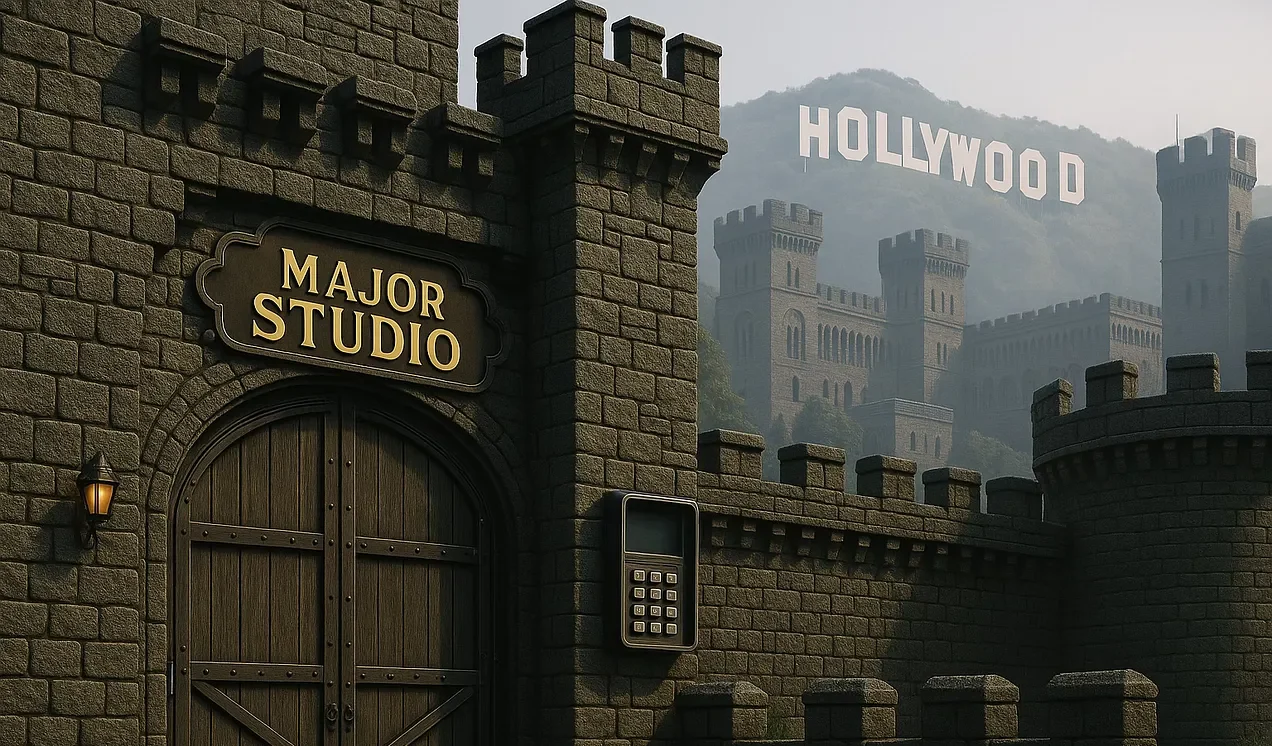The Gates Were Power
“There’s something sacred about walking through the gates of Paramount, Warner Bros, Sony, Fox or Disney.”
— Gary Lucchesi, producer (Million Dollar Baby), former president of Lakeshore Entertainment, at the AVP Summit, Merano, Italy, July 2025
That line wasn’t spoken at Comic‑Con.
It was shared—without irony—at an invitation-only summit of Hollywood’s most successful producers, held at a historic spa and conference venue in the Italian Alps.
A gated gathering.
Of gatekeepers.
Talking about the sacredness of gates.
There is something sacred about those gates.
But we should be honest about what made them sacred in the first place.
The gates weren’t always there. They were built. On purpose.
Not to welcome people in—but to keep most people out.
The gates were control. The gates were power.
Before the Gates
Long before studio backlots and studio bosses, Hollywood was a creative free-for-all.
It was born not out of order, but rebellion—independent filmmakers fleeing Thomas Edison’s East Coast patents, bootlegging new stories in the California sun. No one had a monopoly on who got to make movies. No one held the keys to distribution.
It was chaotic. Unpredictable. And deeply generative.
It looked a lot like the early days of YouTube.
When creators flooded onto the platform in the late 2000s and early 2010s, it wasn’t just a new format—it was a collapse of the gate model. There were no development slates, no casting agents, no network notes. Just upload and see what happens.
The permission layer was gone. The infrastructure was invisible.
And the scale? Infinite.
Then Came the Gates
Eventually, early Hollywood locked itself down.
Studios consolidated production, distribution, and exhibition. They didn’t just make films—they owned the means to make sure you saw them. Physical space became a symbol of institutional power. You had to be inside the system to be seen. Inside the walls. Inside the gates.
What followed was a golden age of control. It was also an era of exclusion.
The business model wasn’t just about telling stories.
It was about deciding who got to tell them.
Disruption from the Inside
The next crack in the gate came from within.
In the late ’60s and early ’70s, a new wave of filmmakers—Scorsese, Coppola, Lucas, De Palma, Spielberg—emerged as the studios flailed. These so-called “movie brats” didn’t tear down the system. They used its tools. They operated inside the walls—but made them feel new again.
They were insiders with outsider instincts.
Their success wasn’t the end of the gate—it was its refresh.
They were a transitional generation—creatively radical, structurally loyal.
Today’s creators aren’t transitioning anything.
They’re opting out of the architecture entirely.
From Celluloid to Code
We’ve cycled back—not to the movie brat moment, but to something earlier. Something wilder.
We’re in another pre-gate era. But this time, the raw material isn’t film. It’s code.
Creators are inventing new formats, new distribution paths, new monetization tools—often without a roadmap. Like early Hollywood, it’s messy. There’s a lot of noise. But it’s also alive.
Today’s creators aren’t waiting for a greenlight. They’re building production companies in Discord servers, launching brands through Shopify, and writing their own distribution logic in real time.
They’re less like studio talent—and more like early Hollywood’s wildcat filmmakers: thousands of small, fast, experimental shops inventing what this medium can be, often without permission, precedent, or fixed roles.
The power isn’t behind the gate anymore.
It’s in the feed. In the format. In the frictionless scale of platforms that don’t care where you’re from—only how long someone stays.
The Gates Are Still Standing
The gates are still there. The names are still etched in stone. The security guards still check the list.
But fewer people are asking to be let in.
The power has moved. The audience has moved. The control has moved.
What’s happening now is outside the gates.
It’s messy. It’s global. It doesn’t follow the old rules.
But it’s real.
And it’s already bigger than anyone planned.
This post is part of No One Planned This—a new book about how control broke, and what’s taking its place. Coming October 2025.
